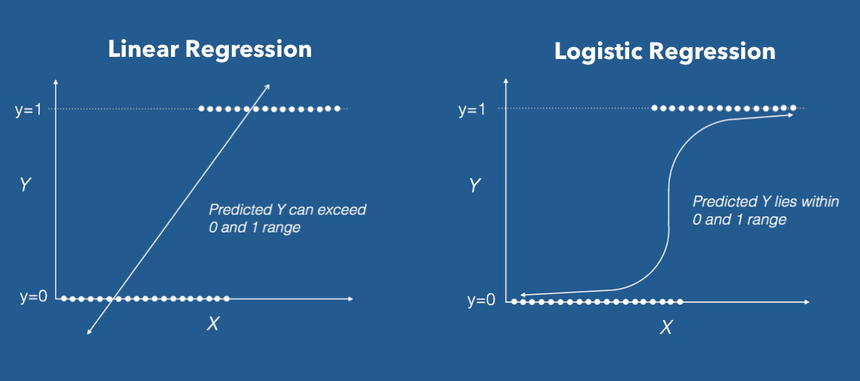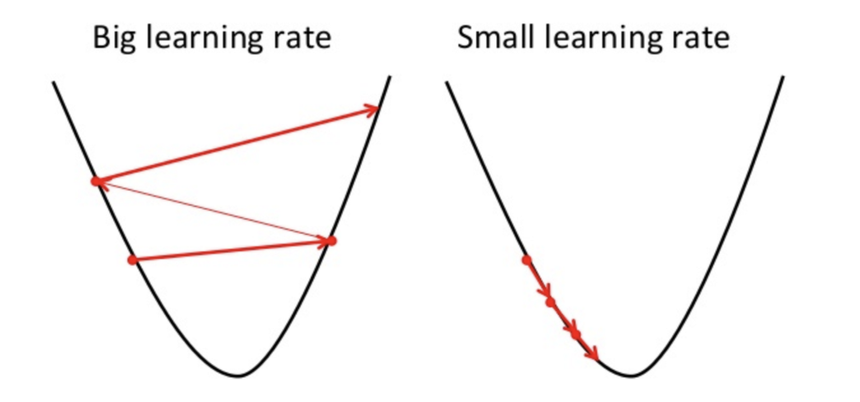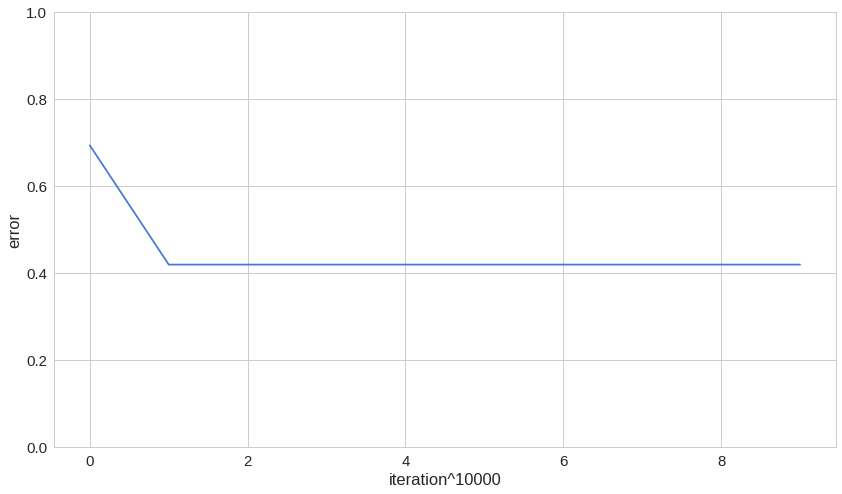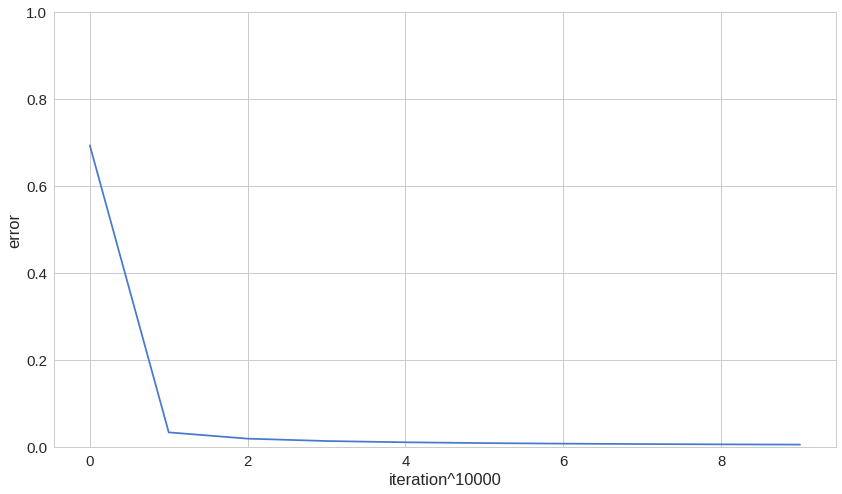Smart Discounts with Logistic Regression | Machine Learning from Scratch (Part I)
— Machine Learning, Statistics, Logistic Regression — 6 min read
Share
TL;DR Build a Logistic Regression model using Python from scratch. In the process, you will learn about the Gradient descent algorithm and use it to train your model.
Let’s say you’re developing your online clothing store. Some of your customers are already paying full price. Some don’t. You want to create a promotional campaign and offer discount codes to some customers in the hopes that this might increase your sales. But you don’t want to send discounts to customers which are likely to pay full price. How should you pick the customers that will receive discounts?
Complete source code notebook on Google Colaboratory
The Data
You collected some data from your database(s), analytics packages, etc. Here’s what you might’ve come up with:
1data = OrderedDict(2 amount_spent = [50, 10, 20, 5, 95, 70, 100, 200, 0],3 send_discount = [0, 1, 1, 1, 0, 0, 0, 0, 1]4)Let’s load the data into a Pandas data frame:
1df = pd.DataFrame.from_dict(data)

Note — the presented data is a simplification of a real dataset you might have. If your data is really simple, you might try simpler methods.
Making decisions with Logistic regression
Logistic regression is used for classification problems when the dependant/target variable is binary. That is, its values are true or false. Logistic regression is one of the most popular and widely used algorithms in practice (see this).
Some problems that can be solved with Logistic regression include:
- Email - deciding if it is spam or not
- Online transactions - fraudulent or not
- Tumor classification - malignant or benign
- Customer upgrade - will the customer buy the premium upgrade or not
We want to predict the outcome of a variable y, such that:
y∈{0,1}and set 0: negative class (e.g. email is not spam) or 1: positive class (e.g. email is spam).
Can‘t we just use Linear regression?
 source: machinelearningplus.com
source: machinelearningplus.com
Linear regression is another very popular model. It works under the assumption that the observed phenomena (your data) are explainable by a straight line.
The response variable y of the Linear regression is not restricted within the [0, 1] interval. That makes it pretty hard to take binary decisions based on its output. Thus, not suitable for our needs.
The Logistic Regression model
Given our problem, we want a model that uses 1 variable (predictor) (x1 -amount_spent) to predict whether or not we should send a discount to the customer.
hw(x)=w1x1+w0where the coefficients wi are paramaters of the model. Let the coeffiecient vector W be:
W=(w1w0)Then we can represent hw(x) in more compact form:
hw(x)=wTxThat is the Linear Regression model.
We want to build a model that outputs values that are between 0 and 1, so we want to come up with a hypothesis that satisfies:
0≤hw(x)≤1For Logistic Regression we want to modify this and introduce another function g:
hw(x)=g(wTx)We’re going to define g as:
g(z)=1+e−z1where z∈R. g is also known as the sigmoid function or the logistic function. So, after substition, we end up with:
hw(x)=1+e−(wTx)1for our hypothesis.
A closer look at the sigmoid function
Intuitively, we’re going to use the sigmoid function “over the” Linear regression model to bound it within [0;+1].
Recall that the sigmoid function is defined as:
g(z)=1+e−z1where z∈R. Let’s translate that to a Python function:
1def sigmoid(z):2 return 1 / (1 + np.exp(-z))A graphical representation of the sigmoid function:

It looks familiar, right? Notice how fast it converges to -1 or +1.
How can we find the parameters for our model?
Let’s examine some approaches to find good parameters for our model. But what does good mean in this context?
Loss function
We have a model that we can use to make decisions, but we still have to find the parameters W. To do that, we need an objective measurement of how good a given set of parameters are. For that purpose, we will use a loss (cost) function:
J(W)=m1i=1∑mCost(hw(x(i)),y(i))Cost(hw(x),y)={−log(hw(x))−log(1−hw(x))ify=1ify=0Which is also known as the Log loss or Cross-entropy loss function
 source: ml-cheatsheet.readthedocs.io
source: ml-cheatsheet.readthedocs.io
We can compress the above function into one:
J(W)=m1(−ylog(hw)−(1−y)log(1−hw))where
hw(x)=g(wTx)Let’s implement it in Python:
1def loss(h, y):2 return (-y * np.log(h) - (1 - y) * np.log(1 - h)).mean()Approach #1 — tryout a number
Let’s think of 3 numbers that represent the coefficients w0,w1,w2.
1X = df['amount_spent'].astype('float').values2y = df['send_discount'].astype('float').values34def predict(x, w):5 return sigmoid(x * w)67def print_result(y_hat, y):8 print(f'loss: {np.round(loss(y_hat, y), 5)} predicted: {y_hat} actual: {y}')910y_hat = predict(x=X[0], w=.5)11print_result(y_hat, y[0])1loss: 25.0 predicted: 0.999999999986112 actual: 0.0Unfortunately, I am pretty lazy, and this approach seems like a bit too much work for me. Let’s go to the next one:
Approach #2 — tryout a lot of numbers
Alright, these days computers are pretty fast, 6+ core laptops are everywhere. Smartphones can be pretty performant, too! Let’s use that power for good™ and try to find those pesky parameters by just trying out a lot of numbers:
1for w in np.arange(-1, 1, 0.1):2 y_hat = predict(x=X[0], w=w)3 print(loss(y_hat, y[0]))10.020.030.046.661338147750941e-1659.359180097590508e-1461.3887890837434982e-1172.0611535832696244e-0983.059022736706331e-0794.539889921682063e-05100.006715348489118056110.6931471805599397125.0067153484891031310.0000453989001861415.0000003056801941519.9999999661698241624.999995824107841730.0010205554347741834.94504110044904619inf20infAmazing, the first parameter value we tried got us a loss of 0. Is it your lucky day or this will always be the case, though? The answer is left as an exercise for the reader.
Approach #3 — Gradient descent
Gradient descent algorithms (yes, there are a lot of them) provide us with a way to find a minimum of some function f. They work by iteratively going in the direction of the descent as defined by the gradient.
In Machine Learning, we use gradient descent algorithms to find “good” parameters for our models (Logistic Regression, Linear Regression, Neural Networks, etc…).
 source: PyTorchZeroToAll
source: PyTorchZeroToAll
How does it work? Starting somewhere, we take our first step downhill in the direction specified by the negative gradient. Next, we recalculate the negative gradient and take another step in the direction it specifies. This process continues until we get to a point where we can no longer move downhill — a local minimum.
Ok, but how can we find that gradient thing? We have to find the derivate of our cost function since our example is rather simple.
The first derivative of the sigmoid function
The first derivative of the sigmoid function is given by the following equation:
g′(z)=g(z)(1−g(z))Complete derivation can be found here.
The first derivative of the cost function
Recall that the cost function was given by the following equation:
J(W)=m1(−ylog(hw)−(1−y)log(1−hw))Given
g′(z)=g(z)(1−g(z))We obtain the first derivative of the cost function:
∂W∂J(W)=m1(y(1−hw)−(1−y)hw)x=m1(y−hw)xUpdating our parameters W
Now that we have the derivate, we can go back to our updating rule and use it there:
W:=W−α(m1(y−hw)x)The parameter α is known as learning rate. High learning rate can converge quickly, but risks overshooting the lowest point. Low learning rate allows for confident moves in the direction of the negative gradient. However, it time-consuming so it will take us a lot of time to get to converge.
 source: https://towardsdatascience.com/
source: https://towardsdatascience.com/
The Gradient descent algorithm
The algorithm we’re going to use works as follows:
1Repeat until convergence {2 1. Calculate gradient average3 2. Multiply by learning rate4 3. Subtract from weights5}Let’s do this in Python:
1def fit(X, y, n_iter=100000, lr=0.01):23 W = np.zeros(X.shape[1])45 for i in range(n_iter):6 z = np.dot(X, W)7 h = sigmoid(z)8 gradient = np.dot(X.T, (h - y)) / y.size9 W -= lr * gradient10 return WAbout that until convergence part. You might notice that we kinda brute-force our way around it. That is, we will run the algorithm for a preset amount of iterations. Another interesting point is the initialization of our weights W — initially set at zero.
Let’s put our implementation to the test, literally. But first, we need a function that helps us predict y given some data X (predict whether or not we should send a discount to a customer based on its spending):
1def predict(X, W):2 return sigmoid(np.dot(X, W))Now for our simple test:
1class TestGradientDescent(unittest.TestCase):23 def test_correct_prediction(self):4 global X5 global y6 if len(X.shape) != 2:7 X = X.reshape(X.shape[0], 1)8 w = fit(X, y)9 y_hat = predict(X, w).round()10 self.assertTrue((y_hat == y).all())Note that we use reshape to add a dummy dimension to X. Further, after our call to predict, we round the results. Recall that the sigmoid function spits out (kinda like a dragon with an upset stomach) numbers in the [0; 1] range. We’re just going to round the result in order to obtain our 0 or 1 (yes or no) answers.
1run_tests()Here is the result of running our test case:
1FWell, that’s not good, after all that hustling we’re nowhere near achieving our goal of finding good parameters for our model. But, what went wrong?
Welcome to your first model debugging session! Let’s start by finding whether our algorithm improves over time. We can use our loss metric for that:
1def fit(X, y, n_iter=100000, lr=0.01):23 W = np.zeros(X.shape[1])45 for i in range(n_iter):6 z = np.dot(X, W)7 h = sigmoid(z)8 gradient = np.dot(X.T, (h - y)) / y.size9 W -= lr * gradient1011 if(i % 10000 == 0):12 e = loss(h, y)13 print(f'loss: {e} \t')1415 return W1run_tests()We pretty much copy & pasted our training code except that we’re printing the training loss every 10,000 iterations. Let’s have a look:
1loss: 0.69314718055994532loss: 0.418992838186300563loss: 0.418992838186300564loss: 0.418992838186300565loss: 0.418992838186300566loss: 0.418992838186300567loss: 0.418992838186300568loss: 0.418992838186300569loss: 0.4189928381863005610loss: 0.418992838186300561F........

Suspiciously enough, we found a possible cause for our problem on the first try! Our loss doesn’t get low enough, in other words, our algorithm gets stuck at some point that is not a good enough minimum for us. How can we fix this? Perhaps, try out different learning rate or initializing our parameter with a different value?
First, a smaller learning rate α :
1def fit(X, y, n_iter=100000, lr=0.001):23 W = np.zeros(X.shape[1])45 for i in range(n_iter):6 z = np.dot(X, W)7 h = sigmoid(z)8 gradient = np.dot(X.T, (h - y)) / y.size9 W -= lr * gradient1011 if(i % 10000 == 0):12 e = loss(h, y)13 print(f'loss: {e} \t')1415 return W1run_tests()With α=0.001 we obtain this:
1loss: 0.423513563238455462loss: 0.418992838186300563loss: 0.418992838186300564loss: 0.418992838186300565loss: 0.418992838186300566loss: 0.418992838186300567loss: 0.418992838186300568loss: 0.418992838186300569loss: 0.4189928381863005610loss: 0.418992838186300561F.......Not so successful, are we? How about adding one more parameter for our model to find/learn?
1def add_intercept(X):2 intercept = np.ones((X.shape[0], 1))3 return np.concatenate((intercept, X), axis=1)45def predict(X, W):6 X = add_intercept(X)7 return sigmoid(np.dot(X, W))89def fit(X, y, n_iter=100000, lr=0.01):1011 X = add_intercept(X)12 W = np.zeros(X.shape[1])1314 for i in range(n_iter):15 z = np.dot(X, W)16 h = sigmoid(z)17 gradient = np.dot(X.T, (h - y)) / y.size18 W -= lr * gradient19 return W1run_tests()And for the results:
1........23---------------------------------------------------------4Ran 8 tests in 0.686s5OK

What we did here? We added a new element to our parameter vector W and set it’s initial value to 1. Seems like this turn things into our favor!
Bonus — building your own LogisticRegressor
Knowing all of the details of the inner workings of the Gradient descent is good, but when solving problems in the wild, we might be hard pressed for time. In those situations, a simple & easy to use interface for fitting a Logistic Regression model might save us a lot of time. So, let’s build one!
But first, let’s write some tests:
1class TestLogisticRegressor(unittest.TestCase):23 def test_correct_prediction(self):4 global X5 global y6 X = X.reshape(X.shape[0], 1)7 clf = LogisticRegressor()8 y_hat = clf.fit(X, y).predict(X)9 self.assertTrue((y_hat == y).all())1class LogisticRegressor:23 def _add_intercept(self, X):4 intercept = np.ones((X.shape[0], 1))5 return np.concatenate((intercept, X), axis=1)67 def predict_probs(self, X):8 X = self._add_intercept(X)9 return sigmoid(np.dot(X, self.W))1011 def predict(self, X):12 return self.predict_probs(X).round()1314 def fit(self, X, y, n_iter=100000, lr=0.01):1516 X = self._add_intercept(X)17 self.W = np.zeros(X.shape[1])1819 for i in range(n_iter):20 z = np.dot(X, self.W)21 h = sigmoid(z)22 gradient = np.dot(X.T, (h - y)) / y.size23 self.W -= lr * gradient24 return self1run_tests()We just packed all previously written functions into a tiny class. One huge advantage of this approach is the fact that we hide the complexity of the Gradient descent algorithm and the use of the parameters W.
Using our Regressor to decide who should receive discount codes
Now that you’re done with the “hard” part let’s use the model to predict whether or not we should send discount codes.
Let’s recall our initial data:

Now let’s try our model on data obtained from 2 new customers:
1Customer 1 - $102Customer 2 - $2501X_test = np.array([10, 250])2X_test = X_test.reshape(X_test.shape[0], 1)3y_test = LogisticRegressor().fit(X, y).predict(X_test)1y_test1array([1., 0.])Recall that 1 means send code and 0 means do not send. Looks reasonable enough. Care to try out more cases?
Complete source code notebook on Google Colaboratory
Conclusion
Well done! You have a complete (albeit simple) LogisticRegressor implementation that you can play with. Go on, have some fun with it!
Coming up next, you will implement a Linear regression model from scratch!
Share
Want to be a Machine Learning expert?
You'll never get spam from me